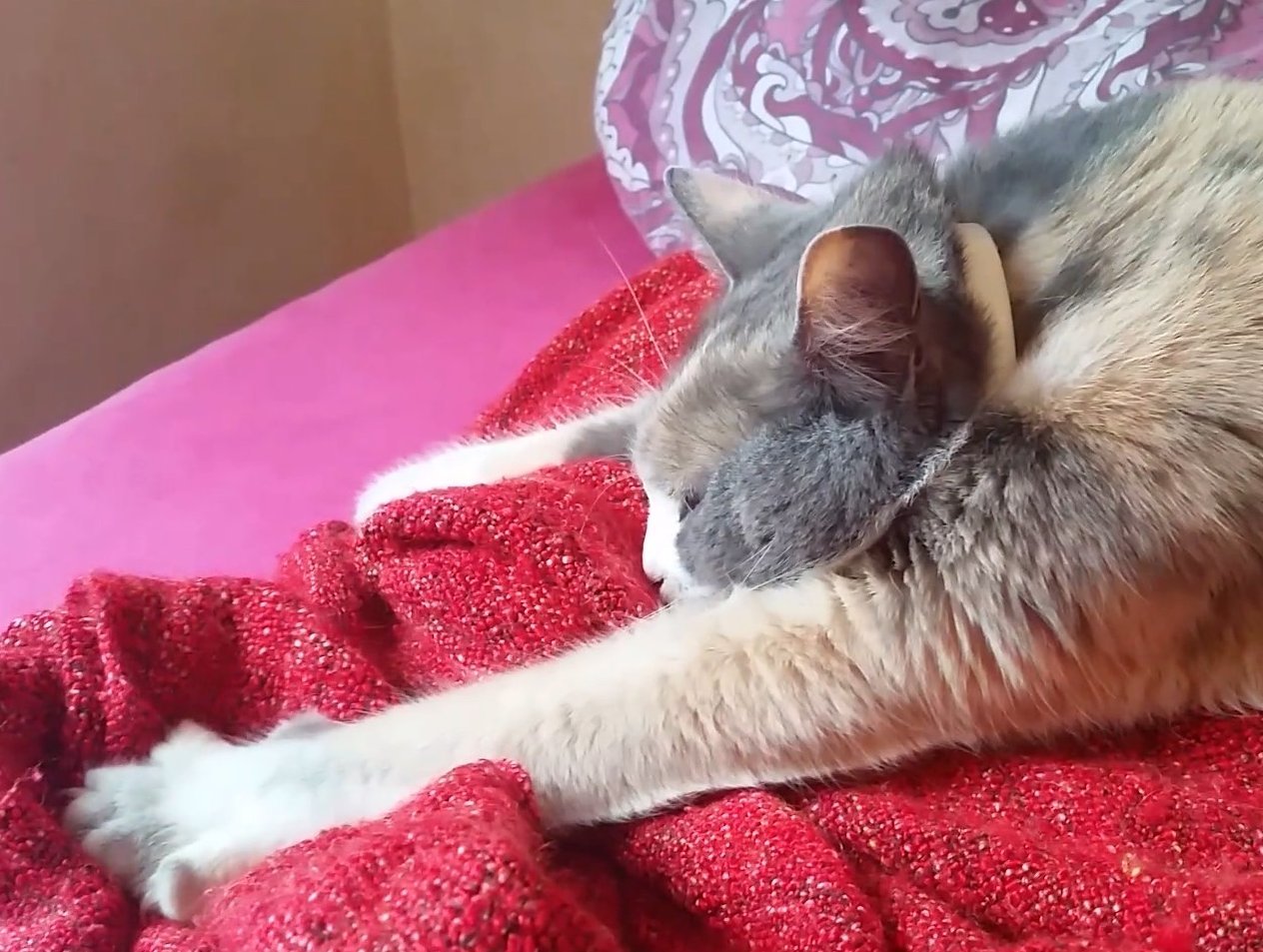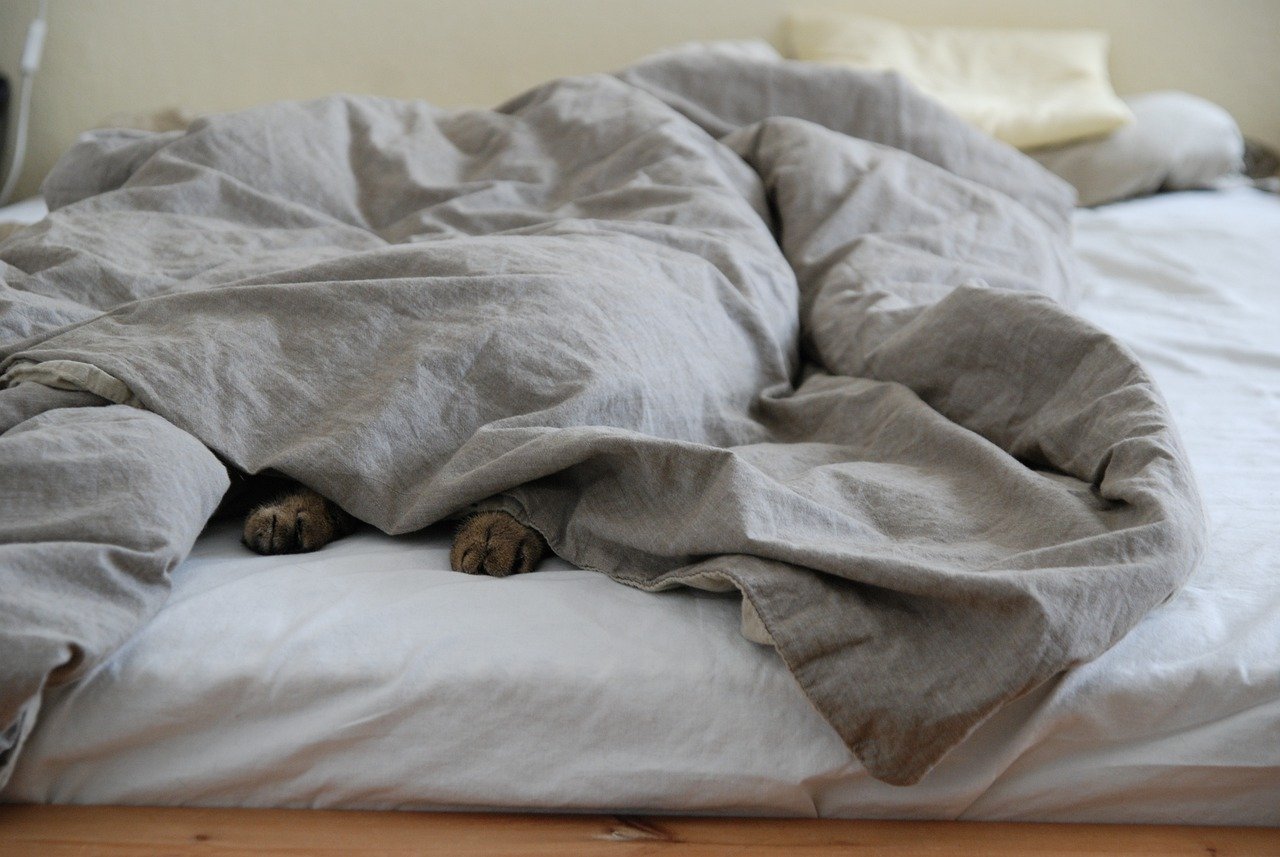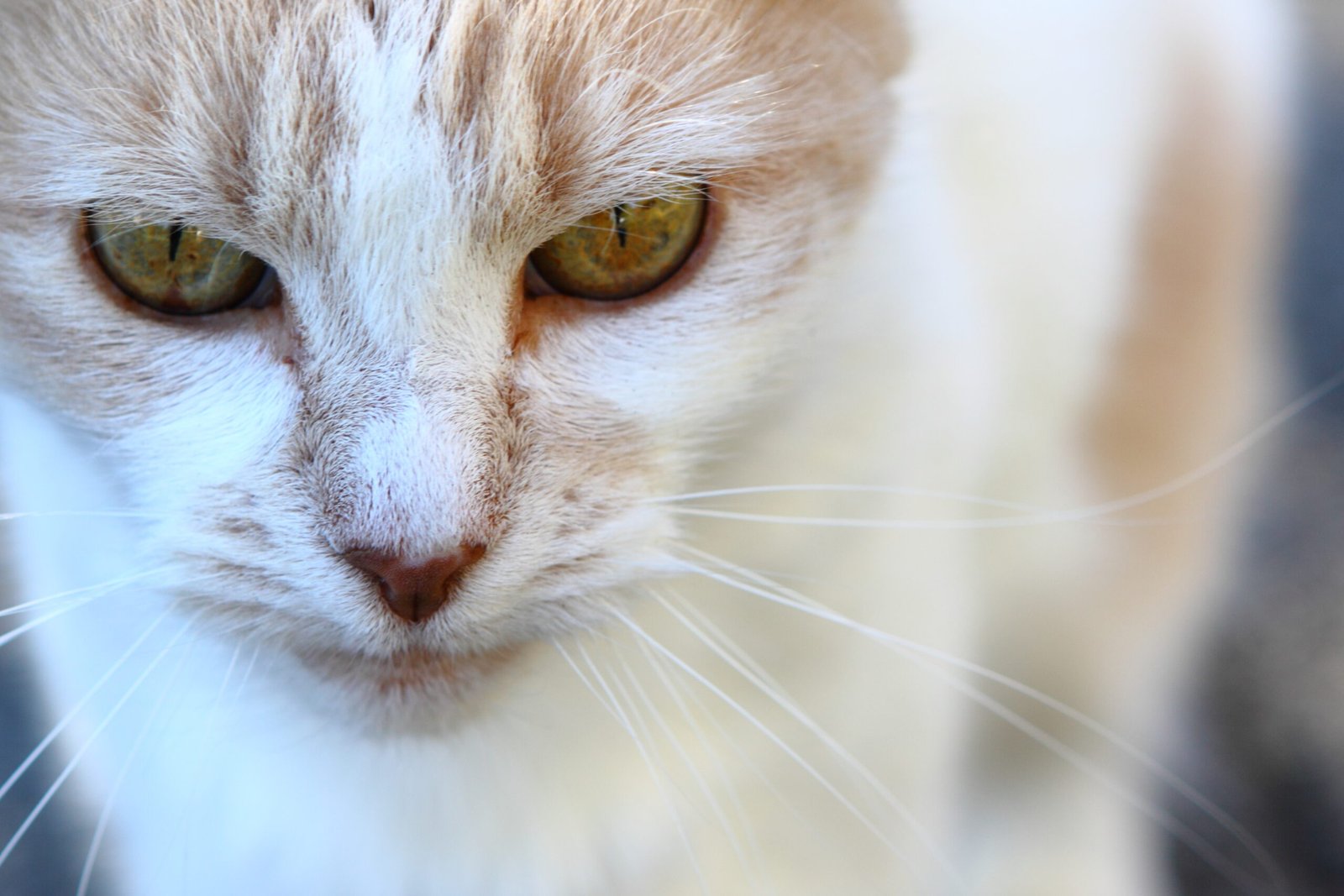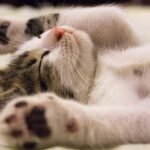Have you ever wondered what truly happens when a cat decides to let you into their secret world? The transformation is subtle, heartwarming, and sometimes downright astonishing. Gaining a cat’s trust feels like winning a rare prize—one that comes with a treasure trove of emotions, gestures, and unspoken connections. Once that invisible barrier falls, your feline friend reveals sides of themselves you might never have imagined. It’s not just about purring or curling up beside you; cats have a deep well of feelings they share only with those they trust most. If you’re lucky enough to have earned a cat’s trust, prepare to witness a symphony of emotional patterns that will melt even the coldest heart. Let’s dive into the most touching ways cats express their deepest trust and affection.
Seeking Physical Closeness
When a cat starts trusting you, they become drawn to your presence like a magnet. Suddenly, you’ll find your furry companion curling up beside you on the couch, brushing against your legs, or even sneaking onto your bed at night. This isn’t just a matter of comfort; it’s a clear signal of their emotional attachment. Cats who feel safe will choose to rest near you, sometimes even following you from room to room. This pattern of closeness is a sign that your cat sees you as part of their “safe zone,” a comforting presence they crave. The more time they spend by your side, the stronger your bond becomes. It’s their way of saying, “I’m happiest when I’m with you,” without uttering a single word.
Slow Blinking as a Sign of Love
The slow blink is often called a “cat kiss.” When a cat trusts you, they’ll make prolonged eye contact and gently blink their eyes at you. This behavior is deeply meaningful in feline language. It’s as if they’re telling you, “I love you, and I feel safe.” If you return the slow blink, it can strengthen your emotional connection even further. This exchange is so powerful that many cat behaviorists recommend it as a way to reassure anxious or shy cats. The slow blink is a window into your cat’s heart, a quiet but profound way to share affection. Over time, this tender gesture becomes a secret code between you and your feline friend.
Showing Their Belly
For most cats, exposing their belly is an act of ultimate vulnerability. In the wild, a cat’s stomach is its most defenseless area. So when your cat flops onto their back and shows you their belly, it’s a massive vote of confidence. This doesn’t always mean they want a belly rub—sometimes it’s just about demonstrating trust. They’re saying, “I know you won’t hurt me.” Seeing your cat sprawled out, paws in the air, is a moment to treasure. It’s a true sign that your cat feels safe, relaxed, and completely at ease in your presence. Even if they spring up quickly, remember: that exposed belly is a badge of your special bond.
Following You Around

If you find your cat shadowing you from room to room, you’re witnessing a touching display of attachment. Trusted humans become the center of a cat’s world, and following you is their way of staying connected. This behavior often starts subtly—a peek into the bathroom, a quiet presence in the kitchen—but soon becomes an endearing routine. Some cats will even wait by the door for you to come home, greeting you with joyful meows. This constant companionship may feel clingy, but it’s a clear sign your cat has accepted you as family. The more your cat follows you, the more confident they feel in your bond.
Head Butting and Face Rubbing
One of the sweetest ways cats express affection is through head butting, also known as “bunting.” When a cat rubs their face against you, they’re marking you with their scent, claiming you as part of their territory. This is a deeply emotional act, reserved only for those they trust. It’s not just about scent-marking—it’s a physical token of connection, like a handshake or hug in human culture. Some cats will gently nudge your forehead, cheeks, or even your hand, leaving behind their scent and a piece of their heart. The more your cat engages in this behavior, the stronger their attachment to you.
Vocalizing and “Talking” to You
A cat that trusts you will often become more vocal, using chirps, trills, and meows to communicate. Each sound carries a different meaning, from simple greetings to requests for attention. Some cats even develop unique “conversations” with their favorite humans, responding to your voice with their own brand of chatter. It’s as if they’re trying to bridge the gap between feline and human language. These vocalizations are a sign of emotional security—a way of saying, “I feel comfortable enough to express myself around you.” The more your cat talks, the deeper your relationship grows.
Bringing You “Gifts”
While it might not always be pleasant to find a toy—or worse, a bug—left at your feet, this gesture is rooted in affection. Cats are natural hunters, and bringing you their “catch” is a way of sharing their success. It’s an instinctual act that says, “I care about you, and I want to provide for you.” Even indoor cats who don’t hunt real prey will sometimes bring you their favorite toys. This pattern of gift-giving is a quirky but sincere way for your cat to demonstrate love and trust. Accept each offering with gratitude; in your cat’s eyes, you’re part of their chosen family.
Kneading with Their Paws

Kneading, sometimes called “making biscuits,” is a soothing behavior cats carry from kittenhood. When your cat kneads on you, it’s a sign of deep comfort and trust. This rhythmic motion, pressing their paws into your lap or chest, is linked to feelings of safety and contentment. It’s as if your cat is saying, “I feel like a kitten again when I’m with you.” Kneading can be accompanied by purring, further amplifying the emotional bond. Some cats even drool a little when they knead—an adorable, if slightly messy, sign of happiness. Cherish these moments; they’re proof your cat sees you as a safe haven.
Sleeping on or Near You
Sleep is when cats are most vulnerable, so choosing to doze off beside you is a huge compliment. If your cat curls up on your chest, in your lap, or at your feet, it means they trust you with their safety. This behavior is especially touching because cats are naturally cautious creatures. They’re telling you, “I feel protected in your presence.” Over time, these nap sessions can become a daily ritual, strengthening your emotional connection. Some cats even purr themselves to sleep, a soothing soundtrack that lulls both of you into relaxation.
Displaying Playful Behavior
Playfulness is a sure sign of a cat’s happiness and trust. When your cat feels safe, their inner kitten shines through. You might notice them chasing toys, pouncing on imaginary prey, or zooming around the house with wild abandon. Play is more than just exercise; it’s an emotional release, a way for cats to express pure joy. Inviting you to play with them is a special honor, a sign that your cat views you as a trusted companion. The more your cat plays in your presence, the deeper your bond becomes.
Grooming You or Themselves Nearby
Cats are meticulous groomers, but when they start licking you or grooming themselves in your presence, it’s a big deal. Licking your hand, arm, or even your hair is a sign of deep affection—akin to how they’d groom another cat they love. This “allogrooming” is reserved for their closest companions. If your cat chooses to clean themselves while sitting near you, it’s another way of saying they feel safe. Their guard is down, and in their world, you’re part of their inner circle.
Tail Language: Upright and Quivering
A cat’s tail is a powerful emotional barometer. If your cat greets you with their tail held high, sometimes with a little quiver at the tip, it’s a clear sign of happiness and trust. This posture is reserved for those they adore. It’s as if they’re waving a tiny flag that says, “You’re my favorite human!” An upright tail can also signal excitement, especially when you return home after being away. Watch your cat’s tail—it often reveals more than words ever could.
Allowing Petting in Sensitive Areas
Cats are notoriously picky about where they like to be touched. If your cat lets you stroke their cheeks, under their chin, or even on their belly, it’s a remarkable sign of trust. These areas are highly sensitive, and most cats will only allow petting here if they feel completely safe. Over time, you might notice your cat leaning into your hand or guiding you to their favorite spots. This willingness to be vulnerable is one of the clearest signs of emotional security. Respect your cat’s boundaries, but cherish these moments of closeness—they’re precious.
Letting You Hear Their Purrs
Purring is often associated with contentment, but it’s also a complex emotional response. When your cat purrs around you, especially during quiet moments or while being petted, it’s a sign of deep relaxation and trust. Some cats even have a special “purr” reserved just for their favorite humans. This soothing sound can lower your stress levels and create a calming atmosphere. Sharing purrs is one of the most intimate emotional exchanges between cat and human.
Showing Excitement When You Return
Cats may have a reputation for being aloof, but many are secretly thrilled when their trusted human comes home. You might notice your cat waiting by the door, meowing in greeting, or weaving between your legs. Some cats will even perform little “happy dances,” leaping or rolling on the floor in excitement. This enthusiastic welcome is a testament to the bond you’ve built. It’s their way of saying, “I missed you and I’m glad you’re back!”
Seeking Comfort During Stressful Events
When faced with loud noises, strangers, or other stressful situations, a trusted cat will often seek you out for reassurance. They might hide behind your legs, curl up in your lap, or press close to your side. This behavior shows that your cat sees you as a source of safety in a scary world. It’s an emotional pattern that deepens your relationship, as your cat learns that you’ll always be there to protect them. Providing comfort during these moments strengthens your connection and builds even more trust.
Displaying Affectionate Nuzzling

Nuzzling is a gentle, loving gesture that cats reserve for their closest companions. Your cat might press their nose or forehead into your hand, cheek, or neck. This action is soothing for both cat and human, releasing calming pheromones and reinforcing your bond. Nuzzling can also be a way for your cat to seek comfort or show gratitude. The next time your cat nuzzles you, take it as the heartfelt compliment it is.
Chirping and Trilling

Not all cats vocalize in the same way, but many trusted cats develop a repertoire of chirps and trills just for their favorite humans. These high-pitched, melodic sounds are usually associated with happiness, excitement, or a desire to interact. It’s as if your cat is sharing their joy with you, inviting you into their playful world. Responding to these sounds with gentle words or play can make your cat feel even more loved and understood.
Letting You Touch Their Paws

A cat’s paws are full of sensitive nerve endings, and most felines are protective of them. If your cat allows you to hold, touch, or examine their paws, it’s a strong sign of trust. This emotional pattern is especially significant during grooming or veterinary care, when a cat is feeling vulnerable. The more comfortable your cat is with you handling their paws, the deeper their trust and affection. Always handle their paws gently, reinforcing the sense of safety you provide.
Maintaining Eye Contact Without Fear

Direct eye contact can be threatening to many animals, including cats. But a trusted cat will often seek out your gaze, holding your eyes with a soft, relaxed expression. This eye contact is a nonverbal affirmation of your bond. It’s a silent conversation, full of unspoken understanding and mutual respect. You might even notice your cat’s pupils dilating in low light or during moments of affection, another subtle sign of emotional openness. These quiet, shared moments are the essence of feline trust.
Inviting You Into Their Favorite Spaces
Cats are creatures of habit, and they often have special hiding spots or favorite nooks. When your cat invites you into these private spaces—by leading you there or allowing you to sit nearby—it’s a significant gesture. They’re sharing their sanctuary with you, a clear sign that you’ve earned their trust. Over time, you may even become part of their daily rituals, joining them in their chosen retreats. This invitation is a rare privilege, a testament to the depth of your connection.
Hi, I’m Bola, a passionate writer and creative strategist with a knack for crafting compelling content that educates, inspires, and connects. Over the years, I’ve honed my skills across various writing fields, including content creation, copywriting, online course development, and video scriptwriting.
When I’m not at my desk, you’ll find me exploring new ideas, reading books, or brainstorming creative ways to solve challenges. I believe that words have the power to transform, and I’m here to help you leverage that power for success.
Thanks for stopping by, Keep coming to this website to checkout new articles form me. You’d always love it!






